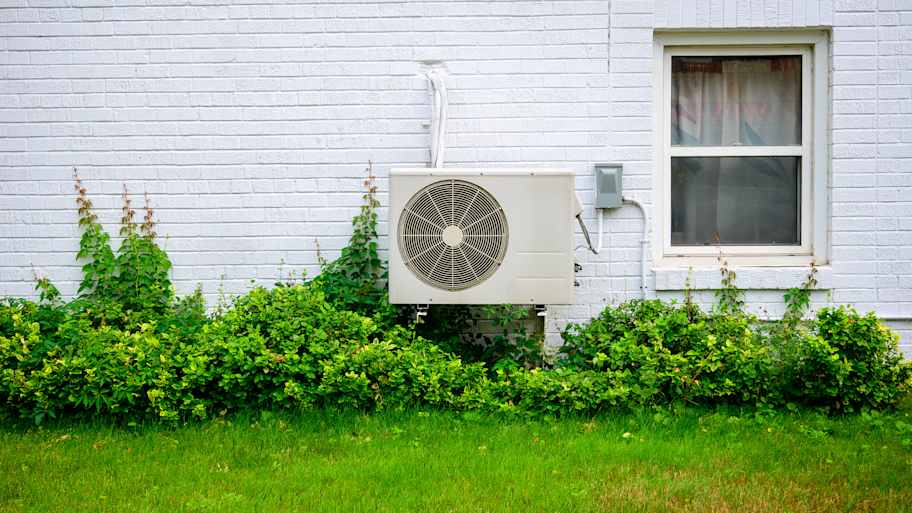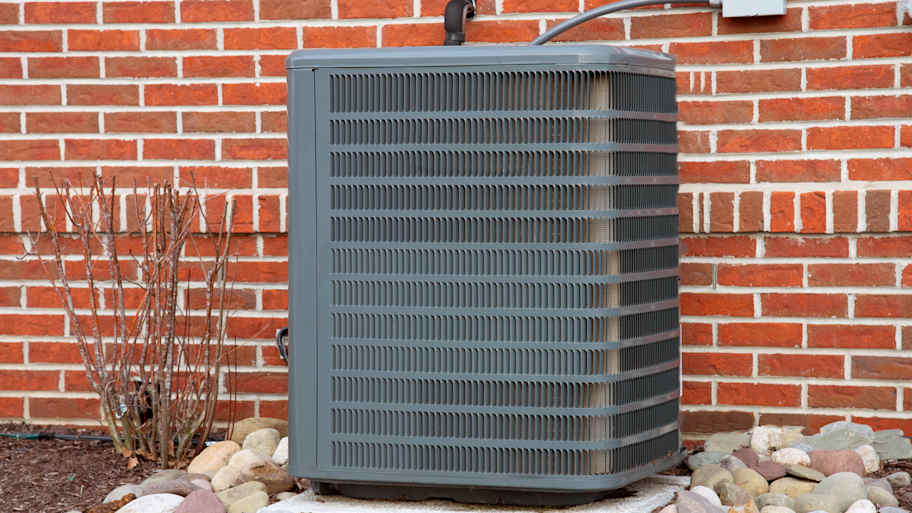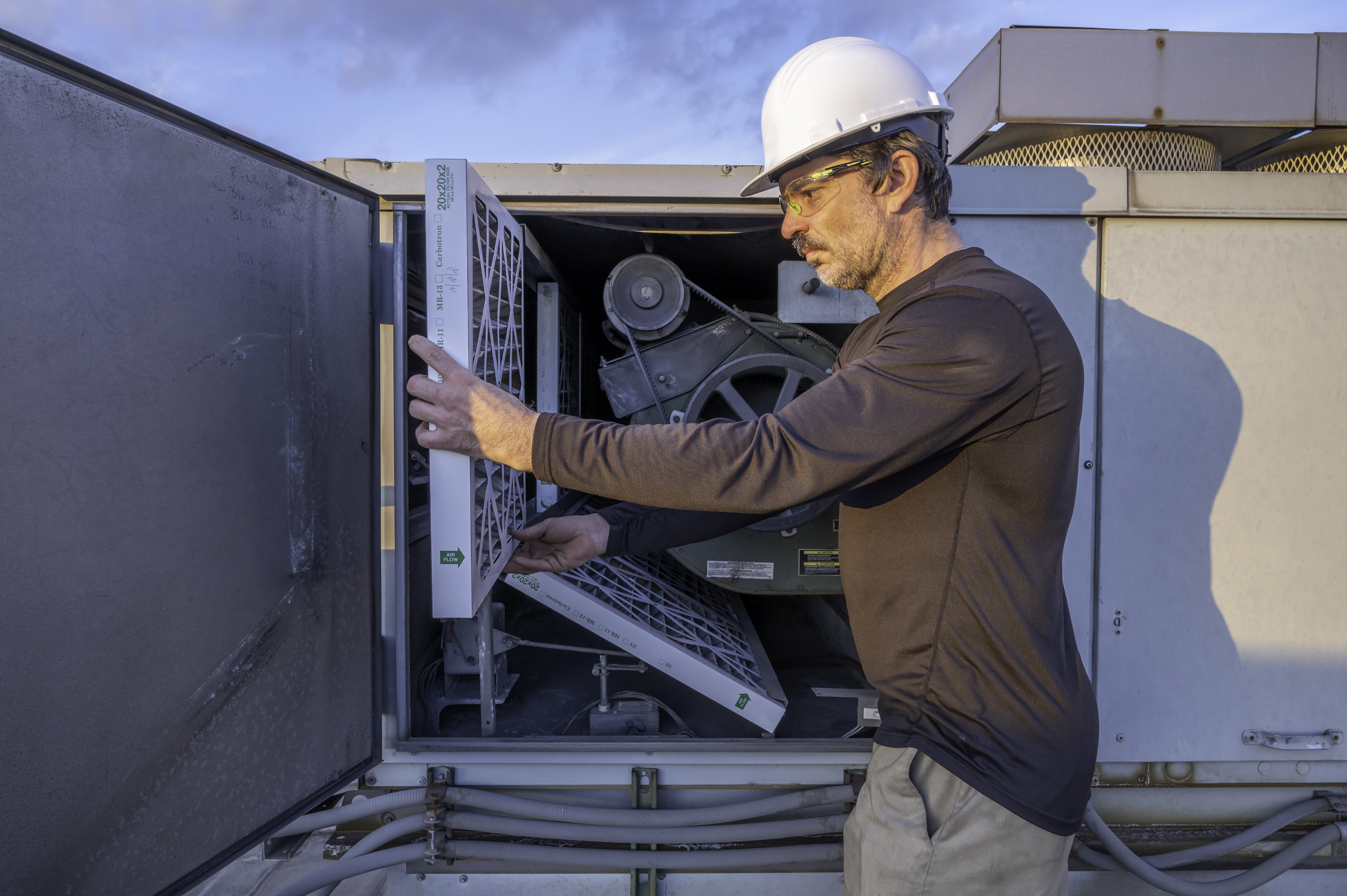
If your furnace is malfunctioning, it could be a faulty control board. Find out what a furnace control board replacement costs for parts, labor, and more.
Two systems, one energy-smart mission


Mini split and heat pump systems are more energy-efficient than traditional HVAC systems.
While heat pumps require ductwork to operate, mini split systems are ductless.
The average mini split system costs between $2,000 and $14,500.
Heat pumps are less expensive, averaging $4,300 to $8,000.
If you're shopping for a new heating and cooling system, chances are you've come across two energy-efficient options: mini splits versus heat pumps. Each HVAC system offers different setups, benefits, and best-use scenarios. Understanding how mini splits and heat pumps compare can help you make the right call for your space and budget.
Mini splits and heat pumps are energy-efficient HVAC systems that function a bit differently. A heat pump is a broader category of HVAC systems that moves heat in or out of a space, and works for heating and cooling. Mini splits are a type of heat pump—specifically ductless ones—that consist of an outdoor unit and one or more indoor air handlers. Traditional heat pumps use ductwork, while mini splits deliver air directly to individual rooms, offering more targeted temperature control.

Mini splits are a type of heating and cooling system made up of two main components: an outdoor compressor unit and one or more indoor air-handling units. These systems operate without ductwork, instead using a small conduit to connect the indoor and outdoor units. Each indoor unit is mounted high on a wall and is controlled independently, allowing for customized temperature settings in different rooms or areas. Mini split systems are used in homes without existing ducts, for room additions, or in spaces that require individual climate control.
| Pros | Cons |
|---|---|
| No ductwork needed | Requires professional installation |
| Zoned climate control | High upfront cost |
| Energy-efficient | May require multiple units |
| Quiet operation | Frequent maintenance |
Best for:
Homes without existing ductwork
Room additions or converted spaces
Multi-family living
Mini-split systems are popular because they don’t require ductwork, making them ideal for older homes, additions, or spaces where ducts are hard or costly to install. Each indoor unit works independently, allowing different temperatures in different rooms—great for households with varied comfort needs or for saving energy in unused areas.
These systems are highly energy-efficient, avoiding the energy loss common in ducted HVAC setups. They also run quietly indoors and out, and offer flexible installation options on walls, ceilings, or near the floor.
The biggest disadvantage of mini split systems is the expensive upfront cost compared to traditional systems. The cost of the equipment itself, combined with the need for professional installation and regular maintenance, can add up quickly. The average mini split installation cost ranges between $2,000 and $14,500, and what size mini split system you need factors into the cost. For example, single-zone systems average $500 to $5,000, and multi-zone systems range between $1,400 and $12,000. Cost will be on the higher end if you’re installing multiple indoor units for whole-home coverage.
Mini-splits need regular maintenance, especially frequent filter cleaning to ensure good airflow and air quality. While DIY installation may seem appealing, professional setup by a local air conditioner installer is essential for proper performance and efficiency—skipping it can lead to leaks, poor operation, or system failure. Some homeowners also dislike the look of the wall-mounted units, which remain visible in living spaces unlike the hidden components of central air systems.

Heat pumps are all-in-one heating and cooling systems that transfer heat rather than generate it. In the summer, they pull heat out of your home to keep it cool, and in the winter, they extract heat from the outside air (even when it's cold) and bring it inside. Ductwork distributes conditioned air throughout the home, and the units are known for being energy-efficient alternatives to traditional furnaces and air conditioners.
| Pros | Cons |
|---|---|
| One unit for heating and cooling | Less efficient in extreme cold |
| Energy-efficient | High upfront installation cost |
| Compatible with existing ductwork | Requires ductwork |
| Lower operating cost | Requires regular maintenance |
Best for:
Mild to moderate climates with less extreme winters
Replacing both AC and heat units
Homes with existing ductwork
Combining heating and cooling into one system makes heat pumps convenient and cost-effective. Instead of burning fuel, they use electricity to move heat—making them more energy-efficient and less expensive to operate than electric baseboard heaters or traditional furnaces. And, because heat pumps don't rely on combustion, they produce no direct emissions, which makes them a cleaner choice for the environment.
In mild climates, heat pumps can significantly reduce monthly utility bills while maintaining consistent comfort. Their ability to reverse function depending on the season adds to their value, meaning you won’t need separate systems for summer and winter. Many heat pumps are designed to work with existing ductwork, so if your home already has a central system in place, the upgrade can be relatively straightforward.
Heat pumps can be more expensive to install than traditional furnaces or AC units, especially if your home isn’t already set up with compatible infrastructure, like ductwork. The average heat pump cost ranges between $4,300 and $8,000, and home square footage influences what size heat pump you need, which factors into the cost. For example, a 2-ton heat pump for a 1,000 sq. ft. house averages between $3,500 and $5,500, while homeowners in a 3,000 sq. ft house would pay between $4,000 and $7,300 for a 4-ton heat pump.
In extremely cold climates, heat pumps can struggle to pull enough heat from the air, which can make them less effective during deep winter months. Like any HVAC system, heat pumps require routine maintenance. Filters, coils, and fans all need regular checkups to keep the system running efficiently. In large or poorly insulated homes, their performance can dip, especially if the system is undersized or forced to work harder than intended.
While subjective, heat pumps are favored because most of their components are tucked away. Indoor vents are flush with walls or ceilings, unlike mini splits, which have visible wall-mounted units.
Mini splits offer more flexibility with zoned control, letting you set different temperatures for different rooms. They also come in various indoor unit styles (wall, ceiling, floor-mounted), making them ideal for custom setups.
Mini splits and traditional heat pumps are built to last around 10 to 15 years with proper maintenance. However, extreme weather can shorten the lifespan of either system, depending on the climate, so their longevity is fairly even.
While initial costs can vary, ducted heat pumps are more affordable when cooling or heating an entire home, especially if ductwork is already in place. Mini splits can get pricey when you need multiple indoor units to cover a large space.
Mini splits don’t require ductwork, making them easier and less invasive to install, especially in homes without existing HVAC infrastructure. The small conduit connecting indoor and outdoor units means less disruption and faster setup.
Because heat pumps are more common and use standardized ducted systems, parts are easier to source, and repair service is more locally available. Mini splits can be more specialized, requiring brand-specific expertise.
Both systems require regular maintenance, but heat pumps require less frequent filter cleaning than mini splits. Mini splits have smaller, individual filters in each unit that need more hands-on upkeep.
Both systems are highly energy-efficient and avoid direct fossil fuel use. Mini splits avoid duct loss, while heat pumps perform better in mild climates.
Buyers favor traditional systems that integrate with existing ductwork and offer whole-home solutions. While mini splits add value, especially for additions or zoned comfort, heat pumps are more appealing to a broader range of buyers.
From average costs to expert advice, get all the answers you need to get your job done.

If your furnace is malfunctioning, it could be a faulty control board. Find out what a furnace control board replacement costs for parts, labor, and more.

The average cost of an electric furnace ranges between $1,700 and $7,000, depending on the size, ductwork, and complexity.

AC capacitor costs can vary based on labor prices in your area and the specific type of capacitor you need. Explore all cost factors here.

Explore the most common HVAC duct types, from flexible to sheet metal to fiberglass, and learn about their pros and cons.

Wondering who to hire for swamp cooler installation? Learn when to call an HVAC contractor, electrician, or handyperson, and what to expect.

Not sure who to hire to install radiant floor heating? Learn which pros handle radiant floor heating installation and how the work comes together.